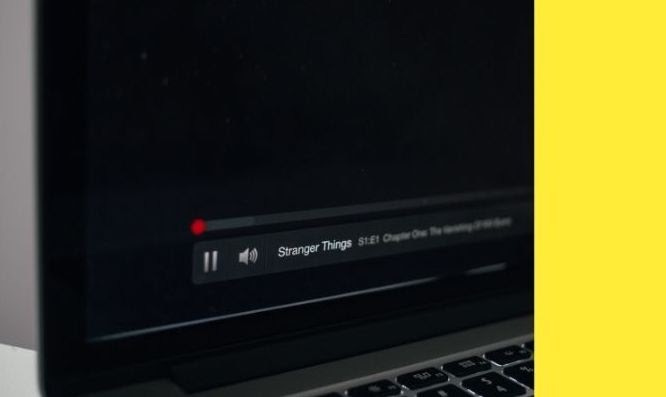Is this email part of the climate problem?
No. Let's put the focus back on those behind the emissions.
Simple climate action // I S S U E 1 5 // D I G I T A L L I F E
Who’s responsible for digital emissions?
By Michael J Coren
Lots of carbon lies behind those clicks. All those data centers, iPhones, web searches, and saved photos of our digital life draw on an electricity-grid still powered, mostly, by fossil fuels. How much can we really change?
Luckily, you can stop worrying about sending fewer emails. It doesn’t add up to much. Despite British officials recently suggesting that we cut back on unnecessary ‘thank you’ emails (as one study suggested), sending one less message per day in the UK will only lower national emissions by 0.0037%.
The real solution, as our reporter Elle Hunt writes this week, lies in addressing how often we upgrade our technology, and where we get the electricity to power it.
The first is firmly under our control, and close to my heart. I love new technology, yet I’ve held on to my iPhone SE for the past four years, and counting. The iPhone SE, originally released in 2016, reached an exalted evolutionary pinnacle of form and function. “In anything at all,” French author and aviator Antoine de Saint-Exupéry wrote, “perfection is finally attained not when there is no longer anything to add, but when there is no longer anything to take away.”
The size fits the hand like a glove. It’s zippy, holds a charge, offers every app, and even manages calls in its sleep. The ‘improvements’ of later models — four cameras! Lidar! Face recognition! — entice me to spend more time on a phone I’d like to spend less time with. I even bought a brand new iPhone 11 to test out whether I was missing something. I took it back to the Apple Store on the last day of the return window, and my SE was waiting for me back home.
All this is to say that living a more deliberate digital life is likely to lower our emissions — and deliver a happier existence. And the big project — decarbonizing our electricity grid — awaits.
Thanks for joining us this week. We’ll be diving into the impact of our digital life and what we can do about it.
Reading Hothouse for free? Support us by sharing this issue with a friend.
Who’s responsible for our digital emissions?
Lockdown revealed just how essential the internet has become for work, education and our well-being. But as technology scales up, its climate impact must be scaled down
By Elle Hunt
When I look back on this year, I will remember living my life on screens. With the pandemic, my reasons to leave the house — friends, exercise, work commitments, holidays — migrated online, keeping my gaze trained on devices every waking moment. I’d often fall asleep while streaming The Good Wife, the end credits rolling in front of my closed eyes.
But what might have registered only a few months earlier as an urgent need for a digital detox, in lockdown I received as a lifeline. My use of technology had never been so rich or rewarding. I became as comfortable with video-calling as I was with picking up the phone. And though I was grateful to technology for enabling some normalcy at a stressful and uncertain time, I also started to feel uneasy about the potential environmental cost.
As ethereal as our digital lives may seem, the devices we use and the internet that connects them are made from very real materials, and powered by vast amounts of energy — all of which have a very real environmental toll. Our “online carbon footprint” is already vast, and it is growing, the explosion in video through 2020 already marked on internet traffic reports. Last year the French think tank The Shift Project urged for a society-wide shift towards “digital sobriety”; I’ve spent all of this year digital-drunk.
But, experts tell me, I should not feel guilty about my tech-dependence. They even say that with the right interventions now, a ‘green internet’ may be possible. Yet they are in agreement: responsibility rests with the technology manufacturers and platforms to make their products and services zero-carbon — not on you and me to limit our use of them. That’s also not to say that we can’t speed up the change.
YouTube accounts for 15% of all internet traffic
Technology — hardware, software, and digital services — will account for an estimated 4% of global emissions this year, according to the Shift Project, roughly comparable to aviation during a pre-pandemic year. The majority is generated during manufacturing, by operating data centers and servers, and by energy-intensive activity such as mining bitcoin.
Messaging and email have the smallest carbon footprint, video calls are a little more intensive, and video streaming significantly more. Online video, roughly half of it pornography, accounted for 60% of world data traffic last year, and the higher the resolution, the greater the environmental toll. Researchers at the University of Bristol in 2019 found that emissions from YouTube in 2016 were equivalent to a city the size of Glasgow; a city of 600,000.
Unsurprisingly, humanity’s digital carbon footprint is thought to have ballooned during the pandemic, largely down to more video calling and streaming. Global internet traffic grew by 40% from February to April 2020, according to network company Sandvine, and video, gaming, and social media accounted for 80% of that. YouTube use nearly doubled to 15% of all internet traffic.
The responsibility lies with big tech
There are some small ways in which we could minimize our personal digital footprint: buy and replace our devices less often, particularly big screens and large batteries that are carbon-intensive to produce; protect our devices from damage so that they last longer; and avoid streaming video when you don't really need to, like for background noise.

But crucially, these are trivial changes compared to adopting a meat-free diet, reducing flying and switching to renewable energy. Real action must come from the technology companies themselves. “None of us are doing a particularly good job of thinking about the supply chain of emissions when it comes to our digital lives,” says Ketan Joshi, an Australian cleantech writer and author based in Oslo. The key issue, he says, is how quickly we can decarbonize the energy grid, followed by optimizing their services for low energy use, and establishing an industry norm for a zero-carbon sector.
The world’s 8.4 million data centers
Because digital infrastructure runs on electricity, it’s easier for the industry to transition to zero or low carbon than for transportation, for example, where a century of infrastructure has been built around fossil-fuel energy. Though the industry is growing, technological developments also mean that devices are becoming increasingly efficient.
Data centers are the workhorses of the internet, storing and processing the world's digital information. There were an estimated 8.4 million in 2017, and in the US alone there are more than 3 million that account for 2% of all energy usage. The amount of computing done by data centers increased by about 550% between 2010 and 2018, yet their energy consumption grew by only 6%.
Google has set a powerful precedent as the world’s largest corporate buyer of renewable energy, deploying machine learning and smart temperature controls to maximize efficiencies in its global data centers. Microsoft also pledged in January that it would be carbon negative by 2030, in part through carbon offset projects such as forest restoration.
‘We make a fuss about leaving lights on — we need to apply that to streaming’
Being prudent with hardware and data use can also produce huge efficiencies. New hardware is a significant source of emissions, exacerbated by companies who replace their servers as soon as the machines exceed their warranty.
When it comes to content, social media companies like Facebook and YouTube operate at such a large scale that small efficiencies can make a huge difference. When Facebook introduced autoplay for video in September 2013, the site had 1.9 billion users (it now has an astonishing 2.7 billion). The switch to autoplay drove a 60% increase in Facebook mobile traffic and a 200% increase on the fixed network, Sandvine reported.
Tech companies could do much more to mitigate energy wastage, says Chris Preist, a professor of sustainability and computer systems at the University of Bristol in the UK. An analysis he published in 2019 found that if YouTube switched to audio only when the video wasn’t actually visible on the screen, it could reduce its annual footprint by between 100 and 500 kt CO2e — the equivalent of emissions from roughly 30,000 UK homes. Other examples of ‘sustainable interaction design’ include reducing the number of spam emails stored on servers by default, or setting smartphone cameras and video streaming to use lower resolution by default.
Companies could also help us make more informed decisions, says Mike Hazas, a professor of human-computer interaction at Uppsala University in Sweden. Netflix could display an “eco” badge against lower-resolution streams, he suggests, and app stores could show ratings based on data traffic and storage efficiency. “It brings it up for discussion, and into the popular consciousness — which is one of the things we’re struggling with,” Hazas says. “People don’t realize, because it’s all invisible in the network. We make a fuss, as a society, about leaving lights on unnecessarily — we just need to apply the same logic to streaming.”

Right now, our personal digital carbon footprints have a natural limit, because we all need to sleep. But in the future, emissions will grow as more devices come online; the ‘internet of things’ that already includes your smart fridge, Alexa home assistant, or smart heating system. Hazas warns that this expansion of “machine to machine communication” could drive internet traffic well beyond sustainable limits.
‘Sharing our experience is an effective way of creating change’
Some smaller companies have placed low-carbon policies right at the center of their businesses. Londoners Tom and Vineeta Greenwood founded their web design company, Wholegrain Digital, in 2016 as a “sort of experiment”, says Tom. By looking for energy efficiencies in every brief, and making sustainability as much a part of their process as SEO, Wholegrain websites are 67% less polluting than the industry average. That comes with the added benefit of being faster and more data-efficient (and therefore cost-effective) for internet users on low incomes or in developing countries.
Wholegrain offers a free carbon calculator, which estimates the emissions of any URL, and last year collaborated on a sustainable web manifesto, a resource to support other designers and developers in their practice. “It’s a set of principles for thinking about this in the work that we do,” says Greenwood. “We’re sharing our own experience, and what we’ve found works — and that’s a really effective way of creating change.”
‘Put the burden back on the people causing the problem’
It is rare that I feel even cautiously optimistic after speaking to climate experts, but it feels like the dial might be easier to move on digital emissions than on other sectors that need to transition. There’s no question of living without technology, and that has motivated me to demand more climate action from the services I rely on. And I’m not going to waste energy feeling guilty about my personal technology use.
“You shouldn’t feel bad for leading a normal, digital life,” Joshi told me. “Instead of deciding not to watch Netflix, you could write to your local representative and say ‘If you ran this on clean energy, I would feel less guilty about watching The Crown’. Take it as a reason to get angrier and more involved, and to put the burden back on the people either causing the problem.”
Got two minutes? Tell us how to make Hothouse better!
Hothouse is a weekly climate action newsletter written and edited by Jemima Kiss, Mike Coren and Jim Giles. We rely on readers to support us, and everything we publish is free to read.










